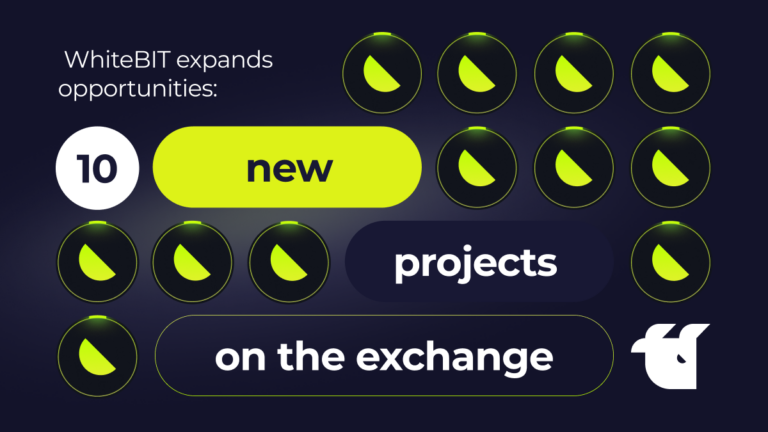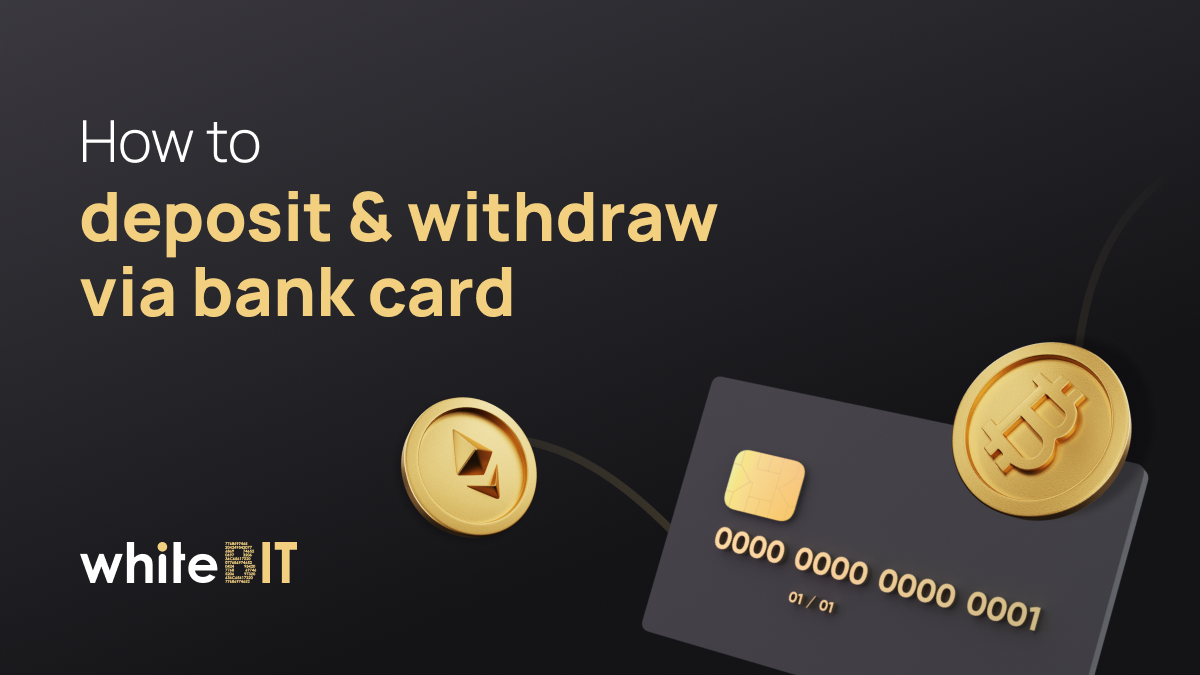Top Crypto Trading Strategies: A Comprehensive Guide

Content
When the first cryptocurrency, Bitcoin, was launched, it didn’t change anyone’s world; most people thought back in 2009. But today, cryptocurrency is so common in our lives that most of us have a crypto wallet with cryptocurrency. There is always hope to repeat the success of those lucky people who bought Bitcoin when it was virtually worthless!
But did you know that you can trade crypto on various markets? To trade successfully, you need a crypto trade strategy. This article explains the most effective trading strategies for beginners. It also aims to describe strategies for cryptocurrency trading and how they work.
What is a Cryptocurrency Trading Strategy?
Crypto trading sounds both difficult and easy at the same time. On the one hand, trading sounds like something incredibly complicated, given it requires applying at least a basic technical analysis and reading indicators or signals to get profit. On the other hand, what can be difficult when buying cryptocurrency?
It turns out that things aren’t as straightforward. Trading crypto does imply buying one currency with another. However, one should use an effective crypto trading strategy to successfully invest in crypto and diversify one’s trading portfolio.
A typical strategy trading cryptocurrency requires having a plan that suits one’s trading style and goals. For example, if a person doesn’t have time to analyze the market all the time and keep an eye on several currencies at once, then day trading strategies to trade cryptocurrency work the best. However, if one has time and is interested in long-term results, one can try the swing strategy for crypto trading.
So, trading strategies for cryptocurrency aim to create a plan that helps traders quickly react to market changes. However, there are different trading strategies for crypto to choose from. Some may be more profitable than others, given each person’s circumstances.
Moreover, traders can use trading bots and backtesting to achieve even better results. Bots are automated software apps that utilize various strategies based on indicators. Users can set up bots to enter or exit trades during critical points to avoid loss.
As for backtesting, it’s a method of evaluating an ex-post trade by using historical data. It gives an opportunity to see whether a cryptocurrency trade strategy is successful.
However, to begin profiting from investing in digital coins, you can benefit from a simple strategy trade.
The Best Trading Strategies Cryptocurrency
Now that you know what a trade crypto strategy is, you can learn more about various types of strategies. There is a wide variety of techniques, with new ones emerging now and then. However, it’s easy to name the following ones as the best for beginners:
- day trading;
- copy trading;
- scalping;
- HODLing;
- swing trading;
- crypto range trading;
- crypto arbitrage.
These are seven simple cryptocurrency trading strategies. However, most of them still require basic knowledge of indicators and indexes. Now let’s dive into details of how to trade crypto strategy.
Day Trading Crypto
A cryptocurrency day trade is a short-term trading plan which involves purchasing and selling cryptocurrency during one chart reading day. However, day trade crypto could be a high-risk venture, based mainly on the distinct liquidity and volatility within cryptocurrency markets.
Today, most day traders adjust to the cryptocurrency market to spot small price moves within the market. By using crypto day trading tactics, they profit from the cryptocurrency cost volatility.
However, efficient crypto day trading strategies require at least basic knowledge of technical analysis. Traders must understand how to identify chart patterns, trading volumes, price changes, and read indicators to spot purchase and sell opportunities. Only that way, traders can profit by buying a cheap coin and selling it when the price is skyrocketing.
The good news is that beginners can find various tips on using multiple indicators, so technical analysis doesn’t feel like rocket science anymore. A day trading cryptocurrency strategy also relies on updates and news within the crypto world. Traders should keep up with the economic situation since it may affect the price of the coin they prefer trading.
Day trading cryptocurrency is more suitable for beginners because it doesn’t require reading charts 24/7. Even though it may seem difficult because of the usage of indicators and indexes, you can simply choose one currency and trade it, dedicating your entire free time. The day trading tactics are less stressful and help you learn more about the market.
Copy Trading
A copy trading crypto tactic enables traders, usually beginners, to automatically copy the positions of experienced traders. The idea is simple: using the most successful strategy used by an experienced trader.
Yes, the copied tactic won’t bring someone millions or even thousands of dollars of profit, but it guarantees sustainable growth. A copy trade crypto requires an account to be linked to another trader’s account. A beginner can link their account to a successful trader, and each trade performed will be automatically copied.
Beginners can use various platforms and websites to register and link their accounts. Experts suggest using reliable apps to avoid scams. The best platforms offer various tools that minimize risks, for instance, stop loss.
Scalping Crypto
A crypto scalping strategy (or simply scalping) is a short-term tactic that relies on making small profits frequently. It is based on small price movements each day. The concept relies on adding up profits from each trade made during the day, so, as a result, the user generates significant revenue over time.
A scalping trading cryptocurrency tactic is so popular in the crypto market due to price volatility. Typically, scalpers benefit from leverage to open several trades at once. They also use stop-loss tools to avoid loss of revenue. Crypto and Forex traders use said tactics through fast response to specific market changes.
Instead of holding trades for days and weeks, scalpers must react within minutes or seconds. Scalpers have to be consistent and fast, so their profits add up. Naturally, scalpers have to be literally glued to their monitors to spot changes and react fast.
So, scalping won’t guarantee immediate profits. Instead, it guarantees a sustainable growth of revenue. You get small wins that accumulate over time. Scalpers use large liquidity amounts to benefit from tiny price changes.
HODL Crypto (Hold On for Dear Life)
HODL cryptocurrency strategy is almost (if not truly) a meme in the trading community. HODL is an acronym for “hold on for dear life,” and you probably already guessed what it means.
Instead of buying crypto when it’s at its low price and then selling it when it’s at its high price (and about to go down), the HODLers suggest not selling the currency.
The idea of HODL trading isn’t new, but it was mainly used within traditional markets. Traditional traders simply work on their portfolios and add assets that aren’t volatile in hopes that someday, they can sell them for a high price.
The crypto HODL idea is similar but a bit risky. If someone chooses HODL, they still have to keep an eye on the news. Crypto is too volatile and may not be suitable as a long-term investment.
Swing Trading Cryptocurrency
Typically, crypto swing trading is considered one of the most common tactics traders choose within such financial markets as Forex, crypto, and stocks. A crypto swing trade relies on spotting price movements, the so-called “swings” within markets over a few days to weeks.
The best way to apply swing trading crypto tactics is to trade on trending markets. That way, you can generate revenue because of larger price moves. Typically, “swingers” choose Bitcoin as it trades at the highest price. They capture BTC price swings within a few days or weeks. The trade results in a good income. However, cryptocurrency swing trading relies on technical analysis.
Technical analysis means cryptocurrency swingers have to analyze historical data of a chosen coin. It includes analyzing current market data, trading volumes, etc. Fundamental analysis means analyzing an asset’s real value. Traders examine its market capitalization and other economic indicators.
Crypto Range Trading
The range trading crypto tactic is mainly popular within non-trending markets. “Rangers” identify stable high and low prices on non-trending markets with candlestick charts that offer an insight into the resistance and support levels.
In this case, “resistance” means the price above the current asset’s worth, and “support” means the price below. The strategy requires purchasing an asset at the level when its price is between the resistance and support level. Then, traders sell the asset as soon as it drops to the resistance level.
Day traders prefer to use this tactic with crypto when it’s oversold. When the currency is overbought, they sell it to generate revenue. The strategy heavily relies on volume. Rangers must analyze asset volume to verify patterns that help decide whether the buying or selling time is right and will lead to revenue.
Crypto Arbitrage
Arbitrage trading crypto means generating revenue from the price differences within different markets trading the same asset.
Suppose users trade an asset Crypto A on two different markets – Market 1 and Market 2. If Market 1 trades Crypto A at the cost of $20 and Market 2 at $30, the arbitrage trader can benefit from buying an asset within Market 1 while selling it on Market 2. In simple words, the arbitrage crypto strategy is based on low-risk trades within different markets.
A trader using arbitrage strategy crypto should consider analyzing various exchanges to spot potential assets. That way, the trader can generate revenue from buying the asset at a lower price and selling it at a higher price on a different exchange.
Typically, price differences aren’t that significant, and traders should consider the transaction costs to ensure the deal generates revenue. One can expect net arbitrage opportunities during highly volatile times. So, it’s worth keeping an eye on different exchanges to grab an opportunity when it’s time.
FAQ
Perhaps, two of the best strategies to trade cryptocurrency are day trading and crypto scalping. Day trading enables you to hold a trade within short periods, often from several minutes to a few hours. Thus, you get maximum profit quickly. Scalping requires opening several trades with simultaneously using stop loss to manage risks. Both tactics are short-term, which works for volatile assets.
Yes, crypto pair trading strategy is profitable and risky at the same time. Cryptocurrency doesn't work as fiat currencies. It's not government-backed and is highly volatile. However, people investing in cryptos hope that they can find the "next Bitcoin". It's true that some cryptos went from basically being worthless to trading for hundreds of dollars. However, you have to be experienced and understand how the technology works to find these coins.
Undoubtedly, the best option for beginners is copy trading. Even though it won't make one a millionaire, it is time and effort-saving. Trading cryptocurrency requires understanding how it works and seeking the so-called "hidden gems" that may increase in price in the future.
Copy-trading requires choosing a reliable platform and linking an account to a successful trader. If a person wants to learn how to trade solo, they can learn from the experience of a chosen trader.
It's only tricky if traders try to bite off more than they can chew. It means that trading could be too overwhelming if a beginner tries to trade several currencies at once. Or the trader uses the wrong strategy.
One of the easiest ways to begin is to use crypto copy trading. It's a mechanical process that doesn't require much involvement but gives an opportunity to learn how the market works.










